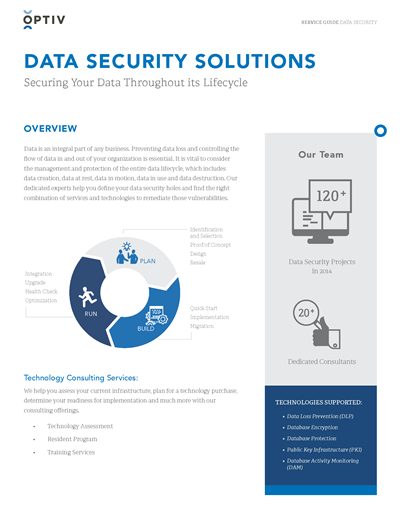Necessary Cyber Security Practices for Effective Data Destruction Approaches
Necessary Cyber Security Practices for Effective Data Destruction Approaches
Blog Article
How Correct Information Damage Adds To Robust Computer Protection Services and Mitigates Threats of Data Violations
In today's digital landscape, the importance of proper data destruction can not be overstated, as it works as a fundamental part of comprehensive computer safety solutions. By carrying out effective information erasure strategies, companies not only protect sensitive info from unapproved gain access to however also strengthen their conformity with regulatory structures - data destruction. The ramifications of inadequate data destruction expand past plain compliance; they can profoundly impact an organization's cybersecurity stance and reputation. Comprehending these measurements increases vital inquiries about the techniques in position and their effectiveness in a period of rising cyber risks.
Importance of Information Damage
In today's digital landscape, the importance of information devastation can not be overstated. As organizations progressively rely on electronic assets, the potential dangers related to information violations and unauthorized access intensify. Efficient information damage is an essential part of a comprehensive information safety and security method, guarding sensitive details from falling under the hands of malicious actors.
When data is no much longer needed, simply erasing documents or formatting tough drives is inadequate. Recurring information can typically be recuperated using easily available tools, positioning significant risks to both people and organizations. This highlights the necessity for robust data damage practices that make sure all data is irretrievably eliminated.
Additionally, regulative conformity mandates, such as GDPR and HIPAA, emphasize the commitment to secure sensitive information, including its proper disposal. Non-compliance can bring about extreme economic penalties and lawful effects. data destruction. Hence, integrating efficient data destruction procedures not just enhances safety but also strengthens a company's track record and trustworthiness

Approaches of Secure Information Erasure
Several effective methods of safe data erasure can be employed to ensure that delicate information is completely gotten rid of from storage space devices. One commonly recognized strategy is data overwriting, which entails replacing existing data with random patterns numerous times. This technique substantially lowers the opportunities of information recovery, although it might not be effective against innovative forensic techniques.

Physical devastation is additionally a reliable strategy, where storage space devices are rendered pointless via shredding, crushing, or incineration. This technique makes certain that data can not be recouped by any type of means yet calls for careful handling of harmful products.
Lastly, specialized software program tools developed for safe data erasure give performances that follow different erasure criteria. These devices frequently consist of features like verification procedures to validate effective data damage.
Using these approaches in mix can boost information safety and alleviate the dangers connected with information violations, ensuring that sensitive information is not inadvertently exposed.
Legal and Compliance Factors To Consider
The approaches used for protected data erasure not only serve to secure sensitive details however likewise should align with lawful and compliance structures regulating data security. Organizations are needed to stick to various guidelines, such as the General Information Defense Policy (GDPR), the Medical Insurance Portability and Accountability Act (HIPAA), and the Payment Card Industry Information Safety Requirement (PCI DSS) These laws mandate certain methods for information handling and devastation, ensuring that personal and delicate information is irretrievably eliminated when no more needed.
Failure to abide by these lawful requirements can result in significant penalties, including penalties and reputational damage. Additionally, organizations have to preserve documents of data devastation processes, showing conformity throughout audits or investigations. This documents not only safeguards against lawful repercussions yet additionally enhances count on with stakeholders and customers, showcasing a dedication to data safety.
Including lawful and conformity factors to consider right into information damage techniques is important for any type of organization. It decreases the danger of information violations and shows an aggressive method to protecting delicate information, eventually cultivating a culture of safety and responsibility throughout the organization.
Influence on Cybersecurity Position
Efficient information destruction substantially boosts a company's cybersecurity pose by lowering the possible assault surface area for cyber threats. When delicate data is not properly destroyed, it continues to be available Recommended Reading to harmful actors that can exploit this info for unapproved accessibility, identity theft, or business reconnaissance. By applying robust data damage procedures, companies can properly minimize the danger of information violations and improve their total safety framework.
Furthermore, the safe disposal of outdated or unneeded information not just safeguards delicate info however view publisher site likewise assists companies follow market laws and standards. Failing to adequately ruin information can result in extreme legal repercussions and reputational damage, further compromising an organization's cybersecurity position.

Inevitably, prioritizing effective data damage is crucial for fostering a robust cybersecurity stance, ensuring that companies continue to be alert against progressing cyber threats while protecting their important assets and stakeholders.
Finest Practices for Organizations
Carrying out best practices for data devastation is vital for companies intending to guard delicate info and mitigate cybersecurity dangers. Primarily, companies ought to establish a comprehensive information damage policy that lays out duties and procedures. This policy needs to adhere to pertinent guidelines, such as GDPR or HIPAA, making sure lawful conformity.
Secondly, it is necessary to use accepted data sanitization techniques, consisting of information wiping, degaussing, and physical damage, customized to the sort of information and storage tool. Using certified professionals for information damage solutions improves the dependability of these methods.
In addition, organizations must preserve a thorough supply of all information storage devices, making sure that all out-of-date index or changed tools goes through devastation. Normal audits of data destruction techniques can aid boost and identify weaknesses conformity.
Worker training is one more essential facet, as personnel should comprehend the importance of information destruction and abide by established methods. Ultimately, companies must record all information devastation activities to provide accountability and traceability, which can be invaluable throughout audits or in the occasion of a breach.
Conclusion

One commonly recognized technique is data overwriting, which entails changing existing data with arbitrary patterns numerous times.The approaches employed for safe and secure information erasure not only offer to protect sensitive details but additionally should align with legal and conformity frameworks regulating data defense. These guidelines mandate specific protocols for data taking care of and destruction, making certain that individual and sensitive data is irretrievably gotten rid of when no longer needed.
By executing robust data devastation methods, companies can properly decrease the threat of data violations and improve their general safety structure.
In verdict, correct data damage is crucial for enhancing computer safety and security services and reducing the risks linked with data breaches. - data destruction
Report this page